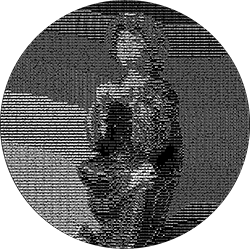Flats at Ham Common, London, UK 1955-58
(James Stirling and James Gowan)
More here - http://mundiinnobis.tumblr.com
FRANK BRANGWYN
The Old Mill
Oil on Canvasboard
18" x 22″
Yohji Yamamoto fw 15
mind, mind, and body
acrylic paint, ink, charcoal, marker, on bristol and newsprint
(top paintings: 36x48″. bottom: 18x24″)bottom paintings from left to right:
still life, body, self portrait
This project was an experiment to see how much control of the painting i could lose, while still calling it my own. Although the paintings were not done entirely by my own hand, my mind created the rules and instructions which dictated what the body of another person will do.
This performance/ experiment was done using two minds, and one body. The smaller paintings were done in an instructive way by myself and another person. I blind folded the person, and guided their hand with my verbal instructions. I tried to be specific in my instructions, using phrases such as “move up and and to the left corner of the page.” However i refrained from telling them what they were drawing. Each drawing was done by a different person.
The larger drawings done slightly differently, giving away more of my control of the painting. Inspired by Sol Lewitt, I created a set of written instructions to give to the person. The instructions varied from specific, to vague. I left the room, and came back when the person had finished the instructions. Each painting had a different set of instructions.
I debated with myself whether or not i could truly call these paintings my own. Some called it a collaborative piece, but i concluded with the decision of this;
Without myself the paintings would never have existed, without the instruction of myself, the painting would have no means of being done.
Damn yo!
Skin Stretch
Computer graphic research from the USC Institute of Creative Technology is a method to produce highly realistic human skin with ultra-fine detail:
Simulating the appearance of human skin is important for rendering realistic digital human characters for simulation, education, and entertainment applications. Skin exhibits great variation in color, surface roughness, and translucency over different parts of the body, between different individuals, and when it’s transformed by articulation and deformation. But as variable as skin can be, human perception is remarkably attuned to the subtleties of skin appearance, as attested to by the vast array of makeup products designed to enhance and embellish it.
Advances in measuring and simulating the scattering of light beneath the surface of the skin have made it possible to render convincingly realistic human characters whose skin appear to be fleshy and organic. Today’s high-resolution facial scanning techniques (e.g. record facial geometry, surface coloration, and surface mesostructure details at the level of skin pores and fine creases to a resolution of up to a tenth of a millimeter. By recording a sequence of such scans or performing blendshape animation using scans of different high-res expressions, the effects of dynamic mesostructure - pore stretching and skin furrowing - can be recorded and reproduced on a digital character.
ICT Graphics out here slayin!
This image needed updates and mandatory fix of background logos. More relevant this time around. Follow the book dev blog over at http://on.fb.me/1d50wa5







































